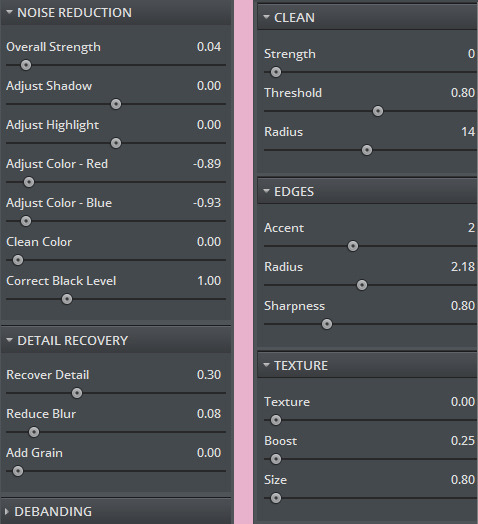
I never keep those exact settings, I always edit the settings according to my videos (the colors, the lighting, etc.) See what looks best with your gif. But there’s this base PSD I like to use for my gifs. You might want to use your own favorite PSDs. ♦ You just need to add it on top of all your frames.
#Topaz denoise 6 action tumblr download
♦ After that, I use a simple sharpening action (you can download it here. The action itself contains 2 different actions, Topaz Detail and Topaz Denoise. It doesn’t always look amazing, it sort of depends on your video, but I personally like using that action. You can try downloading it by following those explanations (but I haven’t tried it). But of course you need the Topaz program to use it.

I can’t remember where I downloaded it from…). ♦ Firstly, I use a Topaz Denoise action to smoothen the gif (you can download the action here. Make sure to follow every single step, otherwise it won’t work.
#Topaz denoise 6 action tumblr how to
This tutorialexplains very well how to use actions on gifs. ♦ For this step, I use actions that I found online. To assure the best quality for my gifs on tumblr, I set the width to either 500, 245 or 160 and make photosets according to these sizes (two side-by-side, three side-by-side, one above the other, etc). ♦ At the top left: Image > Image Size > Choose the Pixel Dimensions You can use the Width and Height mesures at the top left to set the proportion your gif will have. ♦ Using the Crop Tool on the far left of your screen, select the portion of the image you want to keep in your gif. BUT, actually, just press the play button at the bottom left and see what looks best for your gif. ♦ I usually set it to 0,14 seconds if earlier I chose Limit To Every 2 Frames, and approximately 0,1 or 0,12 if I didn’t choose that option earlier. From there, select Other and set the frame delay. ♦ Select all the frames you have left (select the first one, press Shift, select the last one), then click on 0,04. Set the frame delay (aka the speed of your gif)


Note: The more frames your gif has, the ‘heavier’ it’ll be, therefore the less quality it’ll have. ♦ The selected range might give you way too many frames so what you want to do is delete all the frames you don’t need. Step 4. Keep only the frames that you want to include in your gif Sometimes my PS does it automatically but sometimes it doesn’t, I don’t really know why) (after that you might have to click Window > Animation so that you can see every one of your frames at the bottom of your screen. ♦ Most of the time, I check Limit To Every 2 Frames (and keep it at 2), except when the moment I want to gif is particularly short, then I just don’t check it. This will be very approximate if your video is long. ♦ To select a range from your video, move your cursor where the desired moment begins (approximately), press shift on your keyboard, and then slowly move your cursor to where the moment ends. ♦ File > Import > Video Frames to Layers…

(I always download them in MP4) Note: Obviously, the higher the quality of the video is, the higher quality your gif will be. Step 1. Download your video in a format that’s compatible with Photoshop. Also there’s more than one way to make gifs but this is what I do. I use Photoshop CS5 but you can make this using other versions of Photoshop as well. I’ll try to make this as detailed as I can and explain even the basics in case someone is very new to this.


 0 kommentar(er)
0 kommentar(er)
